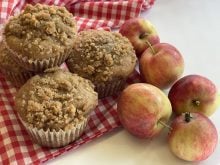During the month of May, I enjoy shifting my cooking from the house to the yard. I love to barbecue.
There are just certain foods that are best made outdoors such as potatoes, carrots and onions cooked in tinfoil or a wiener on a stick over an open fire – that is really the only way to enjoy a hot dog, in my opinion.
Start the season off with a clean barbecue. Remove the barbecue from your deck or place it on plastic and then several layers of newspaper to protect the deck from grease, charred residue and cleaner splashes. Clean residue off the grill racks with a brass bristle grill brush. Then remove the grill racks and place them in a large plastic garbage can or pail. Scrub with hot water, detergent and ammonia.
Read Also

Wanuskewin is on track to become Saskatchewan’s first United Nations’ designated World Heritage Site
The purpose of Wanuskewin is to advance the understanding of the evolving cultures of northern Plains Indigenous peoples, a UNESCO designation would help that goal.
Clean, inspect and if needed, replace the burner and controls.
Using your barbecue
Direct grilling is a high heat method of cooking on the barbecue. Food to be grilled is placed directly over the heat source. The lid on the barbecue is usually left open during the grilling process. The cooking temperatures often exceed 500 F (260 C), which sear the food and produce a brown, caramelized crust with a concentrated flavour.
Foods that cook in 25 minutes or less such as steaks, burgers, boneless chicken breasts, hot dogs, fish and most vegetables are ideal for direct grilling. This method may also be used to sear large cuts of meat before indirect grilling.
Indirect grilling is a slow, low heat method of cooking that transforms the barbecue into an outdoor oven. The food is not placed directly over the heat source. The lid on the barbecue is always closed during cooking. Heat is reflected inside the barbecue, which results in the food cooking slowly and evenly on all sides. The indirect method is ideal for cooking chickens, turkeys, roasts and ribs. Pies, cakes and breads may also be baked on the barbecue using this method.
Source: Romancing the Flame, an Atco Blue Flame Kitchen Cookbook, 2004.
Beer can chicken
This is a unique way to barbecue a chicken using indirect heat. Serves four.
1 whole chicken 3 lb./1.5 kg
11/2 cups your favourite marinade 375 mL
1 can beer (low alcohol beer can be used)
Put the chicken in a large sealable plastic bag and add the marinade. Close the bag and turn it several times to make sure all of the chicken is coated with marinade. Refrigerate for two hours or overnight.
Using a two burner barbecue, place a foil tray under the barbecue grill on the side that will be turned off before starting the barbecue.
Light both burners to preheat and then turn one burner off once a medium heat has been reached.
Open the can of beer and pour about 1/4 cup (60 mL) into the foil drip tray. Add enough water to cover the bottom of the tray by about 1/2 inch (one cm). Make three more holes in the top of the can.
Remove the chicken from the marinade and throw out the bag. Slide the chicken, with the legs pointing down, onto the can. The ends of the drumsticks should touch the bottom of the can and the chicken should stay upright on the can.
Put the chicken and can over the drip tray and use the legs to help keep the chicken upright.
Close the barbecue lid. Grill for about 45 minutes, then turn the chicken 180 degrees to ensure even heating.
Close the lid and continue cooking for another 45 minutes or until a meat thermometer inserted in the breast reads 180 F (82 C).
Remove the chicken and can from the barbecue and put them on a plate so that the can remains upright. Let stand for 15 minutes. The can and liquid will be hot so take care not to burn yourself.
Gently lift the chicken off the can and put the chicken on a cutting board. Throw out the can and liquid. Carve the chicken and serve.
Variation: If you prefer, use chicken stock
or lemonade instead of beer. Pour 11/4 cups
(310 mL) into an empty soft drink or beer can.
This recipe is from the Chicken Farmers of Canada website, www.chicken.ca.
When I made this chicken I used a poultry seasoning rub on the outside of the chicken and sprinkled some on the inside. I also inserted some onion and celery stalks into the neck cavity.
Rhubarb crunch
This is a good spring dessert that cooks well on the barbecue using indirect heat. It is similar to a rhubarb crisp, but with a crunchy crust, top and bottom.
1 cup flour 250 mL
3/4 cup quick rolled oats 175 mL
1 cup firmly packed brown 250 mL
sugar
1/2 cup melted butter or 125 mL
margarine
1 teaspoon cinnamon 5 mL
4 cups diced rhubarb, fresh 1 L
or frozen
1 cup white sugar 250 mL
2 tablespoons cornstarch 30 mL
1 cup water 250 mL
1 teaspoon vanilla 5 mL
whipped cream
Combine flour, oats, brown sugar, butter and cinnamon in a bowl. Mix until crumbly. Press half of the crumbs into a greased nine inch (22 cm) cake pan. Cover with rhubarb.
Combine white sugar, cornstarch, water and vanilla in a small saucepan. Cook, stirring constantly with a wire whisk, until thick and clear. Pour over rhubarb. Top with remaining crumbs.
Bake at 350 F (180 C) for one hour in an oven or on a barbecue.
To cook on a barbecue, place a brick directly on the grill. Put the pan on top of the brick. Bake, with the lid down, over medium heat until crumbs are golden and filling is bubbly. Turn pan a quarter turn every 10-15 minutes to ensure even cooking. Serve warm or cold with a dollop of whipped cream.
Source: Cranberries & Canada Geese by Helen Webber and Marie Woolsey.
Betty Ann Deobald is a home economist from Rosetown, Sask., and one of four columnists comprising Team Resources. Send correspondence in care of this newspaper, Box 2500, Saskatoon, Sask., S7K 2C4 or contact them at team@producer.com.














